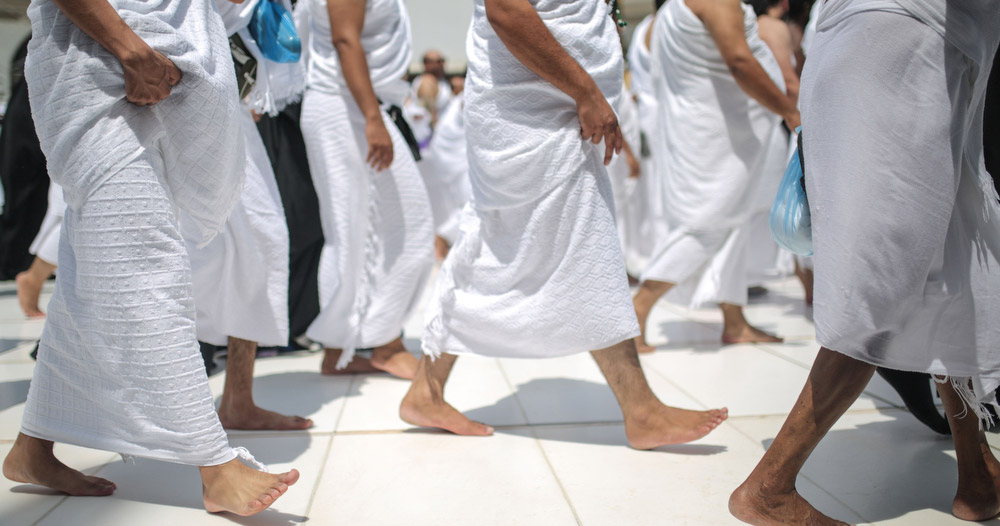Performing Umrah, an Islamic pilgrimage to Mecca, is a deeply spiritual journey undertaken by millions of Muslims worldwide. Unlike Hajj, which is obligatory once in a lifetime for those who are physically and financially able, Umrah holds a special place as a voluntary act of worship that can be performed at any time of the year. It is a sacred ritual aimed at seeking forgiveness for past sins and drawing closer to Allah.
Understanding Umrah
Umrah consists of a series of rituals performed in and around the holy city of Mecca, Saudi Arabia. While it shares some similarities with Hajj, such as the wearing of ihram and performing Tawaf around the Kaabah, Umrah is shorter in duration and does not include certain rites like standing at Arafat.
Step By Step Guide on How to Perform Umrah
1. Ihram
The first step in performing Umrah is to enter the state of ihram, a sacred state of ritual purity. This involves specific acts and intentions that signify the pilgrim’s readiness to embark on the pilgrimage. Ihram attire for men consists of two unstitched white cloths, while women can wear their regular modest clothing. The intention to perform Umrah is made, followed by the recitation of Talbiyah, a supplication declaring one’s submission to Allah.
2. Tawaf
Tawaf is the act of circumambulating the Kaabah, the sacred structure located in the center of Masjid al-Haram. Pilgrims perform seven circuits around the Kaabah in a counterclockwise direction, starting from the Black Stone corner. During Tawaf, pilgrims express their reverence and devotion to Allah through prayers, recitations, and supplications. Men are encouraged to perform Raml, a brisk walk, during the first three rounds.
3. Sa’yee
Following Tawaf, pilgrims proceed to perform Sa’yee, which involves walking briskly seven times between the hills of Safa and Marwa. This ritual commemorates the actions of Hajar, the wife of Prophet Ibrahim, as she searched for water for her son Isma’il. Pilgrims recite prayers and supplications while traversing the distance between the two hills, reflecting on the significance of faith and perseverance.
4. Qasar / Halaq
Upon completing Sa’yee, male pilgrims shave their heads or trim their hair, symbolizing the completion of their pilgrimage. This act signifies humility and renewal as pilgrims return to their normal state after fulfilling their religious duties. Female pilgrims trim their hair as well, following the example set by Prophet Muhammad. With the completion of Qasar/Halaq, all restrictions of ihram are lifted, and the Umrah pilgrimage concludes.
Conclusion
Performing Umrah is a profound spiritual experience that allows Muslims to deepen their faith and seek closeness to Allah. By following the prescribed rituals and observing the principles of humility, devotion, and obedience, pilgrims can derive immense spiritual benefits from their journey to the holy city of Mecca.
A Comprehensive Guide on How to Wear Ihram for Hajj and Umrah
The journey of Hajj or Umrah holds immense spiritual significance for Muslims around the world. Among the essential preparations for this sacred pilgrimage is the proper wearing of Ihram, a state of sanctity and purity. In this comprehensive guide, we’ll delve into the intricacies of wearing Ihram, offering step-by-step instructions for both men and women.
Understanding Ihram: Symbolism and Significance
Ihram symbolizes equality and humility before the Almighty, transcending social and economic disparities. Derived from the Arabic word “haram,” meaning ‘forbidden,’ Ihram signifies the restrictions and sanctity embraced by pilgrims during their journey.
Ihram Attire for Men
Preparation: Before donning Ihram, men should perform ablution (Wudu) and a ritual bath (Ghusl). Additionally, trimming facial hair, underarms, and nails is customary.
Lower Garment: The larger piece of cloth, approximately 4.5 feet by 7 feet, is wrapped around the waist, folded in half, and secured with a belt or Ihram clip.
Upper Garment: The smaller piece of cloth is draped over the shoulders, covering the left shoulder and upper body. The right shoulder remains uncovered during Tawaf, the circumambulation ritual around the Kaaba.
Footwear: Pilgrims must wear flip-flops or sandals that leave the top portion of the foot exposed.
Tips for Wearing Ihram for Men
Practice wearing Ihram at home to ensure comfort and proficiency before embarking on the pilgrimage.
Ihram Attire for Women
Preparation: Similar to men, women should perform Ghusl before entering the state of Ihram, refraining from using perfumed products.
Clothing: Women can wear their regular, modest clothes as Ihram, adhering to Islamic standards of modesty. Ornamental accessories and makeup should be avoided.
Head Covering: A headscarf or hijab is worn to cover the hair, ensuring the face remains uncovered.
Ihram Guidelines for Women
Maintain modesty by refraining from adornments and cosmetics while wearing Ihram.
Restrictions and Spiritual Focus
During the pilgrimage, pilgrims must abstain from various actions, including hunting, sexual activity, cutting hair or nails, using perfumes, and engaging in disputes. These restrictions reinforce the focus on spirituality and detachment from worldly desires.
Conclusion
Wearing Ihram is not merely a matter of clothing but a state of purity and sanctity essential for the Hajj or Umrah pilgrimage. By understanding the symbolism and following the prescribed guidelines, pilgrims can embark on their spiritual journey with reverence and devotion.

